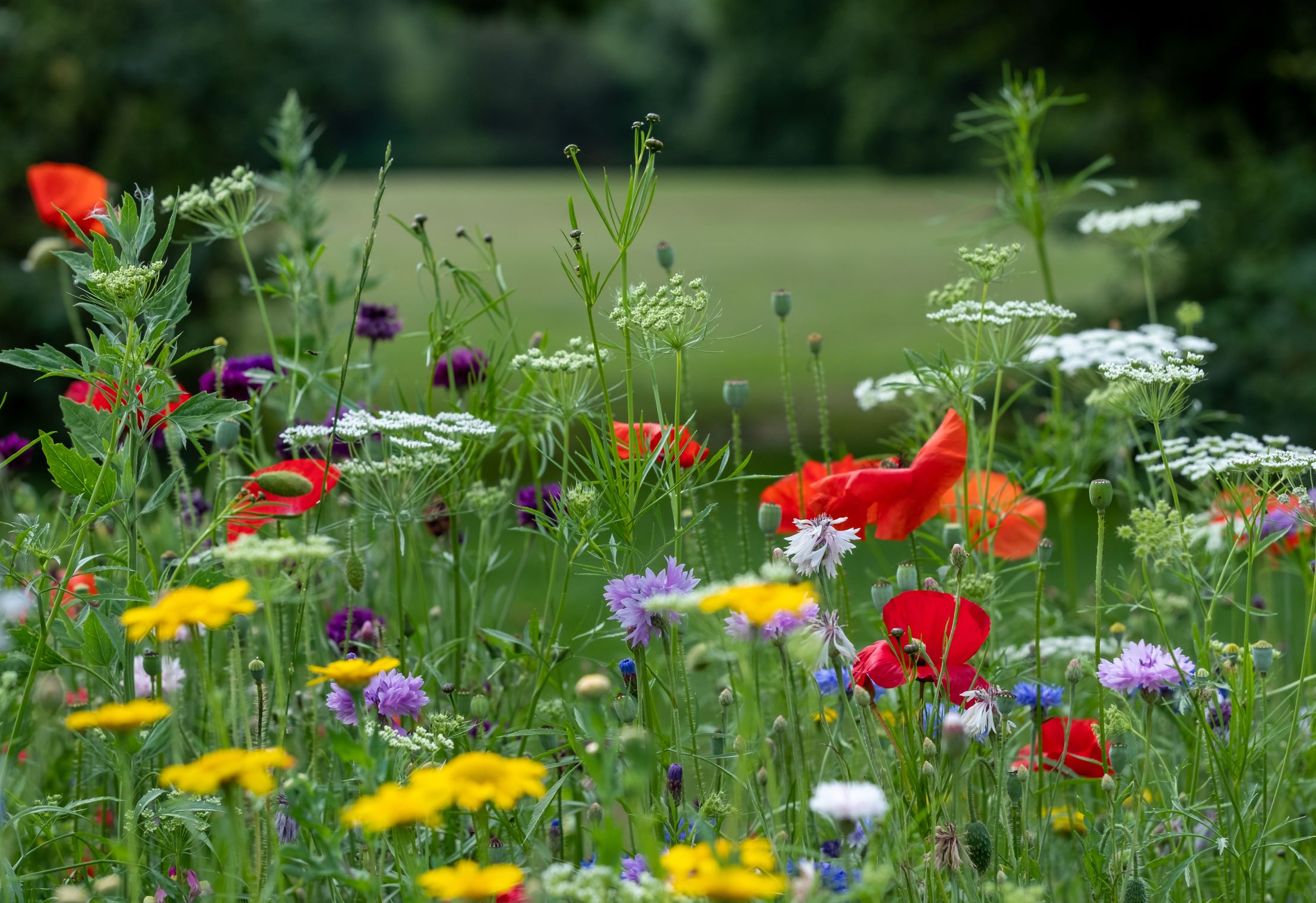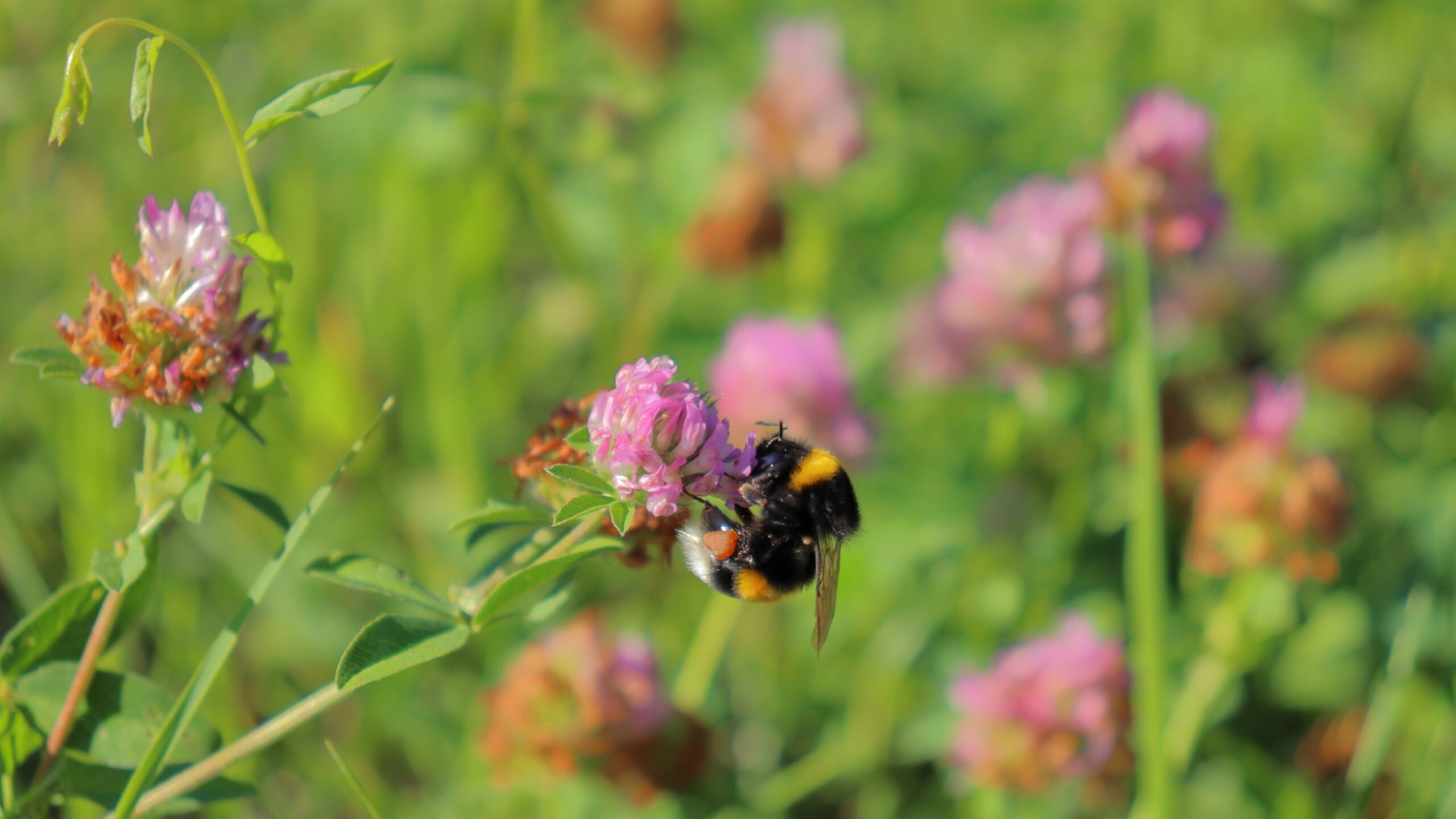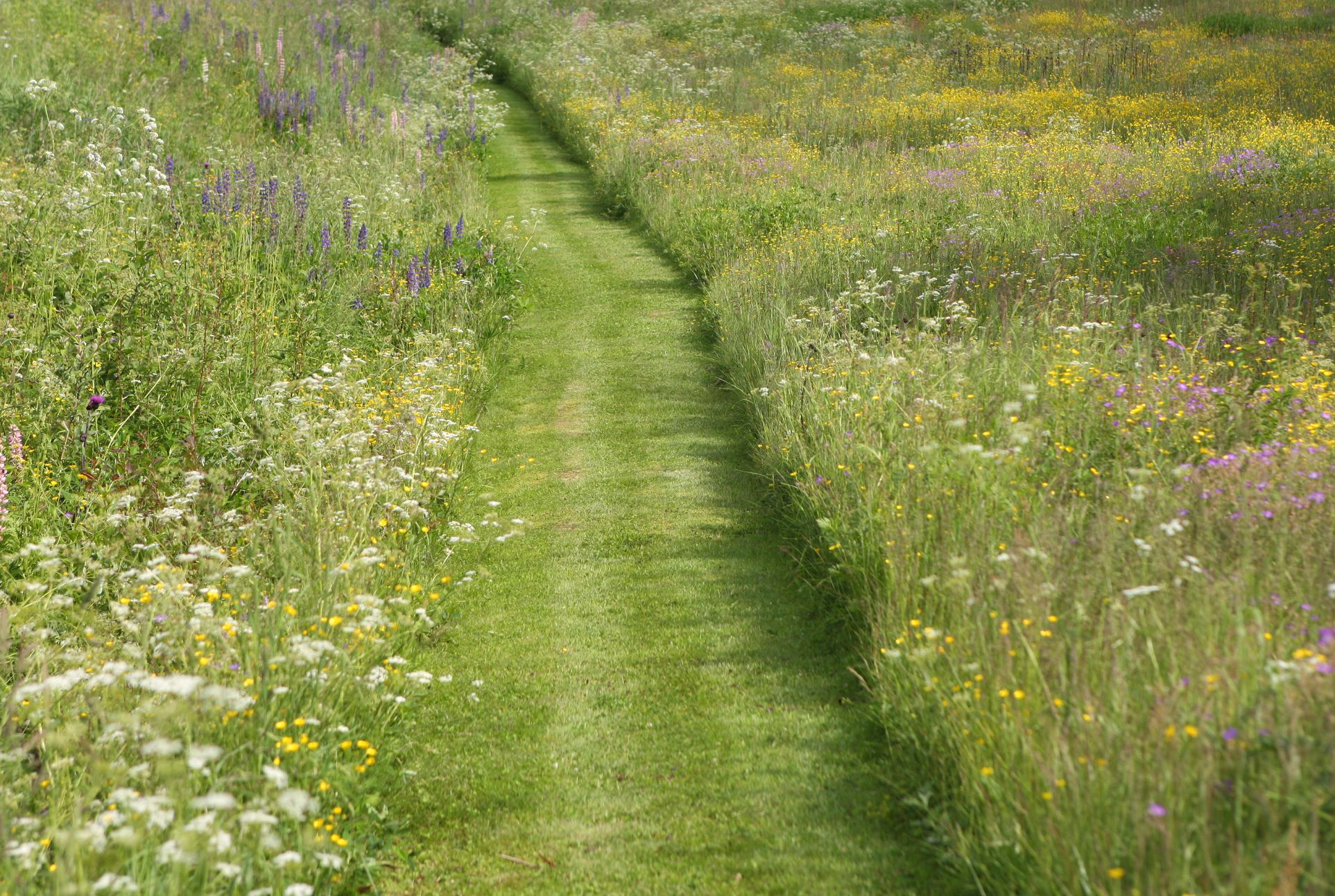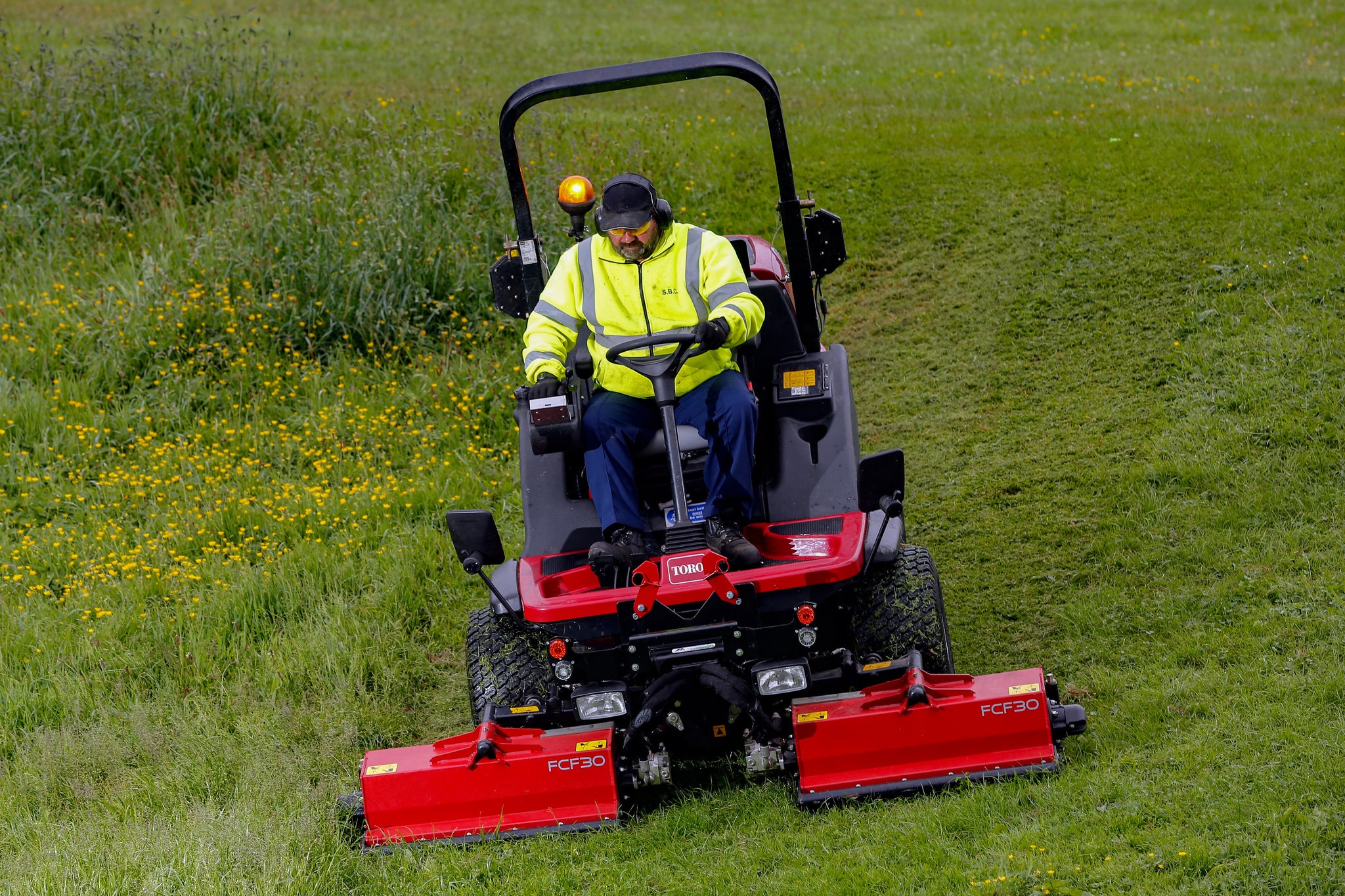Promoting wildflower growth by managing the mess
How to promote wildflower growth this summer
There has been a marked shift in the maintenance of public green spaces in recent years. In lockdown, during the pandemic, for instance, we saw a wildflower boom – and several years on, it’s still a trend that continues to grow.

Why are we seeing more wildflower meadows across the UK?
Across the country, city councils are letting once manicured areas of grass grow out to create rewilded spaces for wildlife to thrive. In the capital, Transport For London (TFL) launched a pilot scheme, seeing different wildflower species flourish alongside London’s busy roads.
Part of Sadiq Khan’s wider Transport Strategy, the project also aims to reduce air pollution and carbon emissions by increasing biodiversity. To do this, wildflower meadows have been set up to provide food and shelter for a variety of species.
From spring 2024, for instance, the government will create an additional 130,000 square metres of wildflower verges, taking its total wildflower coverage to 260,000 square metres (or 37 football pitches).
Across the UK, public and private organisations are joining the movement to encourage and protect wildlife with careful and strategic meadow management. Even Oxbridge colleges are letting their famous lawns turn into wildflower meadows – so expect to see long grass, bees, insects, and other wildlife if you visit!

How can wildflower meadows help combat climate change?
Wildflowers offer huge ecological benefits to the spaces in which they grow, hence the push to introduce them into more urban environments.
But did you know they can also help to prevent climate change? Here are three key ways:
1. Meadows improve air quality by giving biodiversity a boost
Biodiversity is a keyword when discussing wildflowers. It refers to the variety of life on Earth, including the variety of species and ecosystems, as well as genetic diversity within species, all of which are essential for sustainability and the health of the planet – not to mention our own wellbeing.
Wildflowers are rich in nectar and pollen, a valuable food source for pollinators such as bees, butterflies, moths, and hummingbirds.
Creating a pollinator-friendly space supports the health and survival of these species, while also encouraging cross pollination between plant species, promoting higher genetic diversity among plants. An increase in pollination, then, will improve overall air quality.
Wildflowers contribute to the health and functioning of ecosystems through services such as nutrient cycling, soil erosion control, and water filtration. Meadows attract a range of beneficial insects that prey on harmful pests, helping maintain a natural balance.
By allowing or promoting wildflower growth on greens and verges, landscapers and grounds teams can thus significantly reduce the need for pesticides, instead relying on a more natural means of control to eradicate pests.
2. Wildflower meadows act as carbon “sinks” and capture CO2
Like all plants, wildflowers absorb carbon dioxide from the atmosphere via photosynthesis and store it in their roots, stems, leaves, and flowers. As such, they’re referred to as carbon “sinks”.
With extensive root systems, wildflower meadows are better at this process than most and can sequester carbon in the soil for many years, therefore reducing the concentration of CO2 in the atmosphere and improving air quality in surrounding areas.
At King’s College, Cambridge, for instance, researchers found their wildflower meadow was supporting three times as many species of plants, spiders, bats, and insects. Furthermore, it was also responsible for saving around 1.36 tonnes CO2-e per hectare per year – not bad for a space that needs less maintenance!
3. Wildflowers respond well to extreme weather conditions
Aside from their environmental benefits, another thing that makes wildflowers particularly attractive is their ability to survive and thrive in a variety of environmental conditions.
With more extreme weather events like summer droughts, landscaping practices have had to adapt. Interestingly, though, one of the greatest benefits of wildflowers is their resistance to drought.
As wildflowers have deeper roots than traditional plants they can access water stored deeper in the soil, even during times of drought; some also have thicker leaves or waxy coatings that help to reduce water loss. These features help wildflowers thrive in environments with low water availability, making them an attractive choice for landscaping where water is limited or needs conserving.
In addition, wildflower meadows are able to thrive in spaces where traditional plants may suffer; in fact, they prosper in soil with low nutrients and low fertility, where vigorous grasses cannot easily grow and out-compete them.
Therefore, by embracing or seeding a wildflower meadow, landscapers and grounds teams can save both time and money – no need to spend on expensive fertilisers to increase the nutritional value of the soil.

A simple guide to maintaining a wildflower meadow
Compared to traditionally maintained lawns and verges, wildflower areas require much less maintenance. But that’s not to say they require none. A well-considered cutting schedule can keep wildflower meadows and verges healthy and turn otherwise wild spaces into managed areas.
Create a cutting schedule to control grass growth
When it comes to general upkeep, wildflower meadows should be treated the same as any other meadow and cut seasonally. The bulk of growing will be done in spring, but in areas where the grass is plentiful, it can often crowd out the wildflowers.
By cutting the grass back to a height of approximately 7.5cm, you can ensure wildflower verges and spaces are well-managed and balanced.
Wildflower areas will benefit from a main cut during the summer months to remove the bulk of the material, with the prime time to carry out maintenance varying depending on the types of flowers groundskeepers wish to encourage.
During colder months grass should be mowed down to ankle-height and kept short and neat for the winter.
Remove cuttings to maintain wildflower health
What is important regardless of the time of year, however, is that cuttings are removed post-cut. Removing the cuttings prevents nutrients from entering back into the soil and making it fertile, which, as we’ve covered, isn’t a situation wildflowers favour.
Counterintuitively, wildflowers do best in poor soil quality – another reason why they’re a favourable landscaping choice, flourishing where other grasses may struggle to grow.

Try framing wild verges for a well-maintained look
Another tactic is to frame wildflower areas by creating verges, keeping verge sides short to ensure motorists have a good line of sight and maintaining a good aesthetic appearance.
Landscapers and grounds teams can create narrow strips around wilder verges to frame them, cutting to about one-mowers-width – or at most 1.4m – along the front edge of the verge. This will frame the longer grass and wildflower area behind it, giving an attractive, well-maintained appeal.
What machinery is best for wildflower meadow maintenance?
Mowing wildflower areas calls for a machine that is able to tackle long grasses and difficult plants with the versatility to also provide a neat finish when called for.
Flail mowers are great for cutting wilder areas, with cutting heads that are able to cut grass short and long, wet or dry. A triple flail mower such as the Toro LT-F3000 is an ideal choice for meadow management.
The LT-F3000 can tackle those tougher summer cuts and achieve a finer finish often needed in the winter months when verges and meadows require a higher level of refinement. And all with lower operating costs, affordable parts, and easier servicing. For effective wildflower or meadow maintenance, then, it’s a no-brainer!